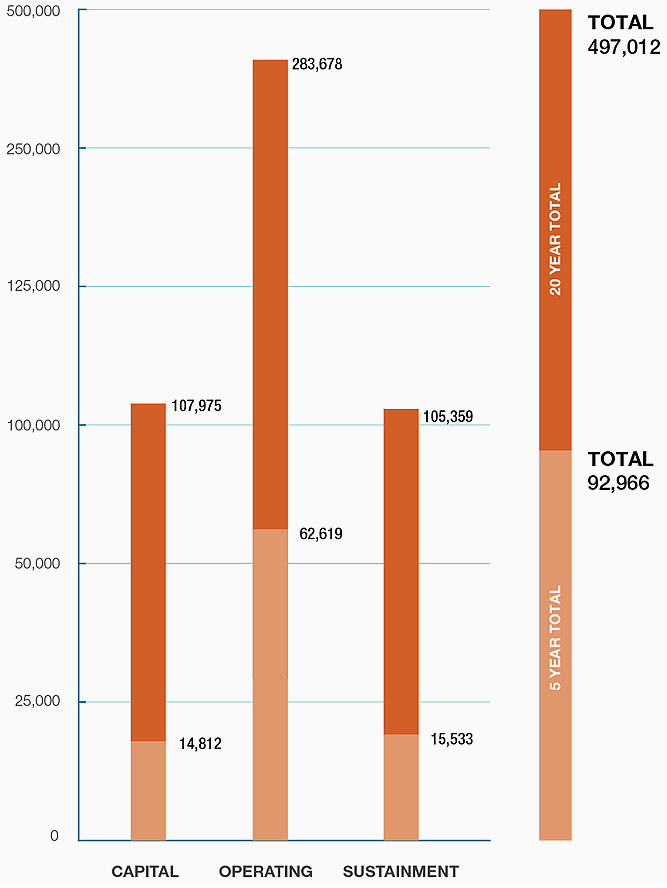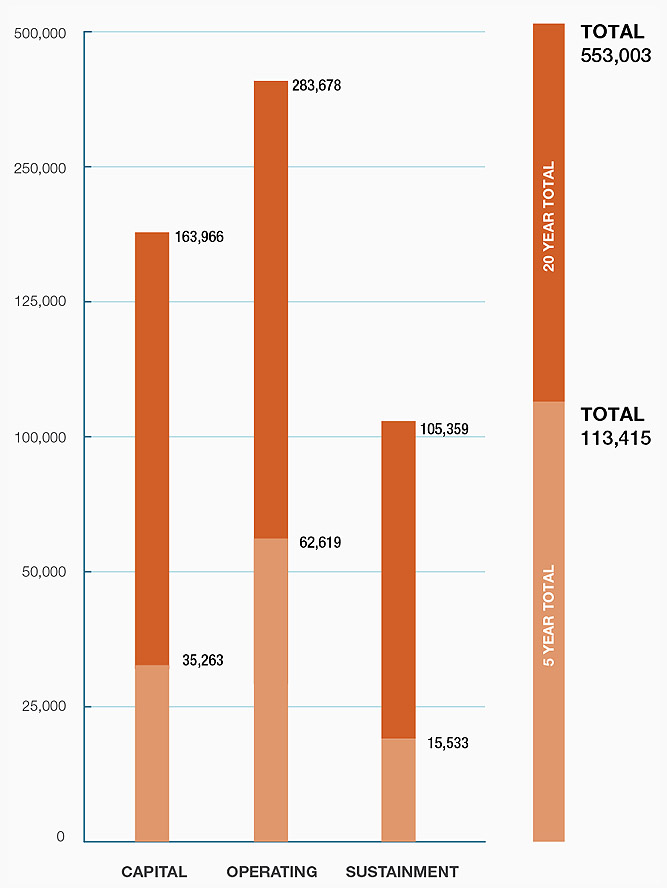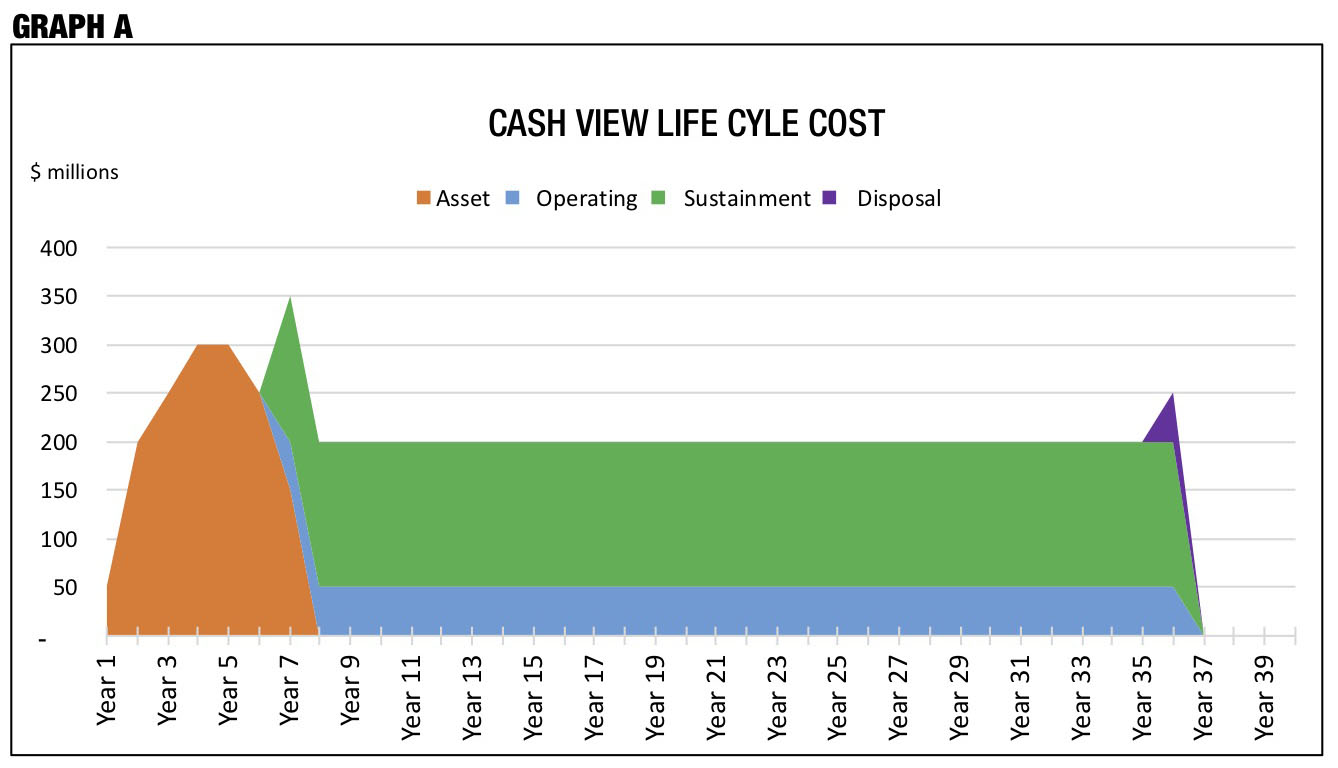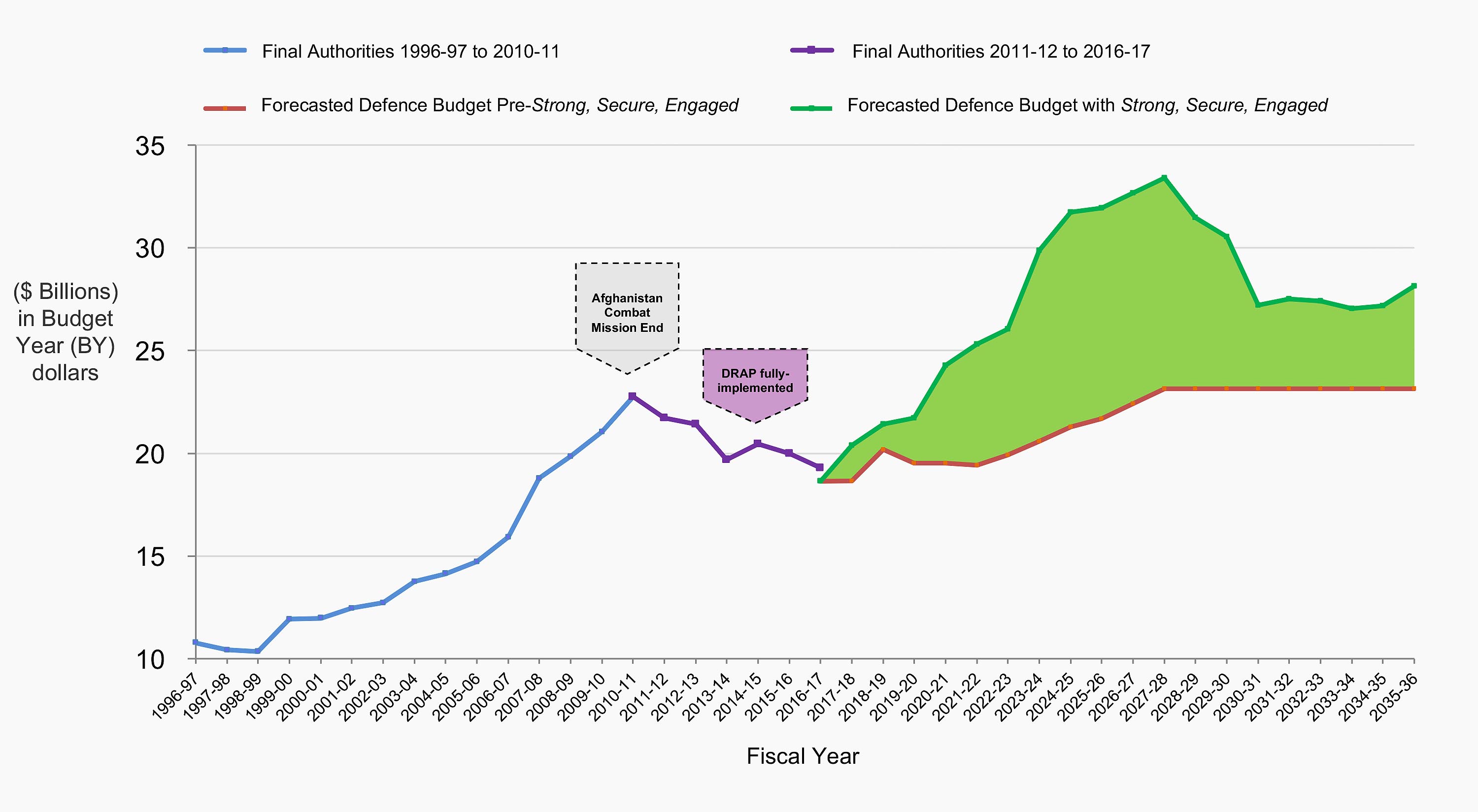Defence Investment Plan 2018 | Strong Secure Engaged: Canada's Defence Policy
1.1 Strong, Secure, Engaged
A New Canadian Approach to Defence
Strong, Secure, Engaged will make Canada more secure and add value to Defence’s contributions to global security by enabling the Canadian Armed Forces to:
ANTICIPATE and better understand potential threats to Canada and Canadian interests so as to enhance our ability to identify, prevent or prepare for, and respond to a wide range of contingencies;
ADAPT proactively to emerging challenges by harnessing new technologies, fostering a resilient workforce, and leveraging innovation, knowledge, and new ways of doing business
ACT with decisive military capability across the spectrum of operations to defend Canada, protect Canadian interests and values, and contribute to global stability.
The strategic context in which the Canadian Armed Forces operates has shifted dramatically over the last decade or more—driven by an evolving balance of power, the changing nature of conflict, and the rapid evolution of technology. These new challenges demand a new response in the way the Forces operates and is funded.
In 2016, National Defence set out to determine how best to confront threats and challenges in the years ahead. As part of this comprehensive review, the Defence Team turned for input to parliamentarians from all parties, to industry, academia, partners, allies, and interested Canadians through unprecedented consultations. Nine roundtables were held across the country, including discussions dedicated to industry and innovation, gender perspectives, and Indigenous issues. As well, over 20,000 Canadians provided their feedback on the defence policy review through an online portal.
Following this fulsome engagement exercise and guided by an independent Minister’s Advisory Panel, the Government of Canada released Strong, Secure, Engaged: Canada’s Defence Policy in June 2017.
This policy outlines Canada’s defence priorities for the coming 20 years and provides the funding necessary to meet Canada’s defence needs now and into the future. It articulates how the Government of Canada will support and employ the Canadian Armed Forces to defend domestic interests and contribute to a more secure and peaceful world.
Strong, Secure, Engaged provides a bold new vision to defence that will make Canada:
- Strong at home, its sovereignty well defended by a Canadian Armed Forces also ready to assist in times of natural disasters, other emergencies, and search and rescue
- Secure in North America, active in a renewed defence partnership in NORAD and with the United States
- Engaged in the world, with the Canadian Armed Forces doing its part in Canadian contributions to a more stable, peaceful world, including through peace support operations and peacekeeping
Central to achieving this vision is the ability to anticipate new challenges, adapt to changing circumstances, and act decisively with effective military capability. In turn, this demands that Canada has an agile, multi-purpose, combat-ready military that is operated by highly-trained, well-equipped, and professional personnel. Given the uncertainty and complexity of the global security environment, now and into the future, a flexible and versatile Force that can take informed, decisive action to accomplish the Government’s objectives is essential to the military’s operational effectiveness and long-term success.
Strong, Secure, Engaged focuses on defence priority areas, which are reflected and reinforced in the Department of National Defence and the Canadian Armed Forces 2018-19 Departmental Plan.
These include:
- Fostering well-supported, diverse, and resilient people and families with a wide range of initiatives that transform how personnel are cared for and supported—from recruitment through transition to post-military life. Canada cannot meet its defence needs without dedicated, motivated, and highly skilled people. National Defence will implement concrete actions that ensure personnel and their families are well supported and resilient: physically, psychologically, and socially.
- Growing and enhancing Canadian Armed Forces capability and capacity by providing the Defence Team with the training and skills required to do the difficult and complex work asked of them. Under Strong, Secure, Engaged, the Regular Force will grow by 3,500 to 71,500 members and the Reserves will increase by 1,500 to 30,000 members. In addition, Defence will align its strategic and operational plans to ensure the Canadian Armed Forces is able to conduct the full range of operations, whether it is helping Canadians in times of need or making meaningful contributions to international peace and security.
- Exploiting defence innovation by ensuring that the Defence Team can tap into creativity and expertise available outside of government. It will compete for the best research, technology, and new ways of doing things to take advantage of the most ground-breaking concepts generated by academics, universities, and the private sector. Strong, Secure, Engaged commits to innovation and research in emerging domains as well as investment in critical areas such as intelligence.
- Modernizing the business of Defence by continuously improving the way the Defence Team works—streamlining the procurement process, adopting innovative ways of delivering critical infrastructure services, and working as efficiently and effectively as possible to deliver results. It also means being a responsible steward of the environment by reducing the environmental footprint of National Defence, minimizing the impact of its activities on the natural environment, and managing resources responsibly.
To advance these priorities, Canada’s defence policy has assigned significant financial resources and commits to greater openness regarding how Defence investments are managed, to make sure the additional resources provided will achieve the expected results. Increased transparency through regular reporting on major investments will strengthen Canadians’ confidence that their tax dollars are well spent and that members of Canada’s military have the tools and resources they require to do their jobs.
This first Defence Investment Plan under the new policy delivers on this commitment, providing financial details about the capital equipment and infrastructure projects over $5 million as well as support contracts above $20 million expected to begin in the coming years that the Canadian Armed Forces will require to conduct its missions over the next two decades.
1.2 Defence Investment Plan 2018
National Defence has always placed a premium on capability planning and has consistently applied best practices to make sure the Canadian Armed Forces has the capabilities and resources required to fulfill its engagements. Now, Defence Investment Plan 2018 raises the bar—both in its strategic approach to investing and its transparency.
This first investment plan ever to be made public by National Defence is the product of the most diligently costed defence policy in Canada’s history. The Defence Team worked with external global defence costing experts who brought their expertise in the defence and security domain, gained from defence reviews in allied nations, to support this process. In addition, the costing methodologies used to confirm the Strong, Secure, Engaged vision underwent a third-party review conducted by five external accounting firms.
The Defence Investment Plan is driven by our assessment of the security environment, and the capital investments necessary to fulfill future Canadian Armed Forces missions while ensuring their affordability, as laid out in Strong, Secure, Engaged.
Defence Investment Plan 2018 is based on the technical plan which has been submitted to and approved by the Treasury Board of Canada. The information in the technical plan has been condensed into a more digestible and accessible product with a new online tool that provides industry with access to information about defence investment opportunities. This meets the defence policy commitment to demonstrate transparency and accountability while respecting the department’s requirement to protect commercially sensitive material. In this easy-to-use format, time-saving searches for up-to-date information on projects can be conducted and sorted using a variety of criteria.
The Investment Plan distributed to the public will be refreshed annually and reset every three years, following approval of the technical Investment plan by the Treasury Board. Canadians will now be able to understand how defence funds are being spent and the Defence Team will have the necessary flexibility to prioritize important investments that empower the Canadian Armed Forces to defend Canada and contribute to a safer, more prosperous world.
Strong, Secure, Engaged identified projects and outlined capital spending totaling $108 billion on an accrual basis ($164 billion on a cash basis), along with operating expenditures of $283.7 billion and sustainment expenditures of roughly $105.4 billion over 20 years. Defence Investment Plan 2018 illustrates these monies will be put to work over the duration of the policy.
Accrual basis: costs of acquiring an asset are spread over its useful life, not just at the time that bills are paid
Cash basis: costs for the acquisition of capital assets and associated operating costs are booked immediately in the year the cash disbursement is made
Table 1: Total Approved Strong, Secure, Engaged Investments 2017-2018 through 2036-37 on an Accrual Basis ($millions)

Table 1 - Text version
This bar graph shows total approved Strong, Secure, Engaged investments from 2017-18 through 2036-37 on an accrual basis in millions of dollars for the 20-year and 5-year periods in the Investment Plan. The vertical axis shows the dollar thresholds ($25,000M; $50,000M; $100,000M; $125,000M; $250,000M; and $500,000M). The bars on the horizontal axis show the investments in capital (20-year: $107,975M; 5-year: $14,812M); operating (20-year: $283,678M; 5-year: $62,619M); and sustainment (20-year: $105,359M; 5-year: $15,533M). The right-most bar shows the 20-year total ($497,012M) and 5-year total ($92,966M).
Table 2: Total Cash Requirements for Strong, Secure, Engaged Investments 2017-18 through 2036-37 ($millions)

Table 2 - Text version
This bar graph shows total cash requirements for Strong, Secure, Engaged investments from 2017-18 through 2036-37 in millions of dollars for the 20-year and 5-year periods in the Investment Plan. The vertical axis shows the dollar thresholds ($25,000M; $50,000M; $100,000M; $125,000M; $250,000M; and $500,000M). The bars on the horizontal axis show the investments in capital (20-year: $163,966M; 5-year: $35,263M); operating (20-year: $283,678M; 5-year: $62,619M); and sustainment (20-year: $105,359M; 5-year: $15,533M). The right-most bar shows the 20-year total ($553,003M) and 5-year total ($113,415M).
Defence Investment Plan 2018 is not a policy document, as its underlying policy is Strong, Secure, Engaged. Neither is it an operational planning report, since it does not specify the precise timing of future Treasury Board approvals or contracting processes.
Defence Investment Plan 2018’s primary purpose is to inform Canadians, parliamentarians, industry, defence experts, media and academics, but it will be an equally useful resource within National Defence. The Defence Team now has a financially focused structure that provides accurate and timely information for decision makers, so that the Canadian Armed Forces can satisfactorily deliver its mandate. This will facilitate planning surrounding the complex investment, capability, and fiscal considerations required to implement Canada’s defence commitments.
1.2.1 Capital Investment Fund
Historically, different parts of the defence budget were managed according to differing rules, which made it difficult to spend all the money earmarked for National Defence. This approach also posed problems in managing the funding of complex, multi-year projects with long lead times and made it challenging to report to parliamentarians and Canadians.
Strong, Secure, Engaged identified National Defence needs and the many forces at play driving these requirements. It also provided National Defence with realistic and predictable funding of $213 billion— the sum of $108 billion for capital acquisitions from the Capital Investment Fund (commonly referred to as accrual space – see Table 1) and $105.4 billion for sustainment costs funded from reference level.
Full Life Cycle Approach
National Defence will complete a life-cycle cost estimate for all new major capital projects prior to their acquisition. This requires Defence to estimate all costs over the entire useful life of a capital asset; in some cases, this can be 50 years or more. In completing a life-cycle cost estimate, Defence must forecast four types of costs: project development and acquisition, operating, sustainment and disposal.
Strong, Secure, Engaged fully funded the estimated demand for both capital and operating funding to cover defence spending over this timeframe.
National Defence plans its capital expenditures over the life of its assets. Since most of the major capital investments are made over multiple years, the department needs to secure government funding that reflects the full lifetime costs of projects.
Strong, Secure, Engaged introduced a new funding mechanism by securing the money needed for investments in the fiscal framework for the next 20 years ($108 billion). This funding envelope, the Capital Investment Fund, represents the ceiling for planned capital asset investments over the period on an accrual basis. In other words, the amortized cost of defence capital assets required over the next two decades is capped at $108 billion.
The new funding mechanism also identifies the amount of cash funding that National Defence will require to acquire capital assets. National Defence expects to spend $164 billion in capital investments over the next 20 years.
Accrual accounting better reflects actual fiscal impacts over time. However, reporting on a cash basis gives parliamentarians, industry, and other stakeholders a clearer sense as to the timing and estimated amounts of acquisitions outlined in IP 2018. This is a much shorter timeframe than the amortization costs to be spread over the 20-year timeframe covered by Strong, Secure, Engaged.
National Defence plans its capital investments on an accrual basis, however its year-to-year funding is managed on a cash basis. As an example, Graphs A and B below illustrate the procurement of an asset with a useful life of 30 years at a total cost of $7.6 billion, reflecting both the accrual and cash views of the expenditure.


Graph A & B - Text version
- Development and acquisition costs
Development costs are all expenses associated with the planning to acquire or build a capital asset, including costs to design and/or modify capital assets for a specific purpose. Acquisition expenses are all costs related to the purchase or building of a capital asset including ancillary costs such as the salaries for the project management staff.
In this scenario, the development and acquisition costs, identified in orange, are estimated at $1.5 billion and it is anticipated that the asset will be put into service in year 7.
On an accrual basis, the full acquisition and development costs of $1.5 billion are spread across the useful life of the asset. As detailed in graph A, the department will incur an expense commencing in year 7, the year that the asset enters service, of approximately $50 million per year for 30 years.
On a cash basis, cash payments are made as expenses are incurred in acquiring the asset, as detailed in graph B. The total development and acquisition costs of $1.5 billion will be paid in the first 7 years of the procurement process.
- Operating costs
Operating costs are all expenses associated with the operation of the asset and would include such expenses as the salary of the asset’s crew and maintenance personnel, and fuel costs. For this scenario, as shown in blue, it is estimated that it will cost approximately $50 million per year to operate the asset and this expense would start in year 7 when the asset is put into service and will continue until the asset reaches the end of its useful life. The total operating cost over the life of the asset would be $1.5 billion. Operating expenditures are expensed in the year that the payment is made. Therefore, the accounting treatment for these expenditures is the same for both the accrual basis (graph A) and the cash basis (graph B).
- Sustainment costs
Sustainment costs are all expenses associated with maintaining and repairing equipment over its useful life, including items such as planned maintenance, repairs and upgrades. For this scenario, as shown in green, it is estimated that the sustainment costs will be $150 million per year starting in year 7 when the asset is put into service and will continue until the asset reaches the end of its useful life. The total cost over the life of the asset would be $4.5 billion. Sustainment expenditures are expensed in the year that the payment is made. Therefore, the accounting treatment for these expenditures is the same for both the accrual basis (graph A) and the cash basis (graph B).
- Disposal costs
The disposal costs would include all expenses associated with the retirement and disposal of the asset. In this scenario, as shown in purple, it is estimated that it will cost $50 million to dispose of the asset in year 37. The cost to dispose of the asset will also be expensed in the year that the payment is made. Therefore, the accounting treatment for this expenditure is the same for both the accrual basis (graph A) and the cash basis (graph B).
Total costs In the scenario, the total life-cycle cost for the asset over its useful life of 30 years is estimated to be $7.6 billion. On an accrual basis, graph A illustrates how defence plans, budgets, and accounts for the four components of the life-cycle cost. The department will account for the total life-cycle costs of $7.6 billion over 30 years at a cost of approximately $250 million per year. On a cash basis, graph B illustrates when the funding to pay expenses for each of the four components of the life-cycle cost of $7.6 billion will occur. The department will spend $1.5 billion for development and acquisition in the first 7 years and then will spend the remaining $6.1 billion over 30 years at a cost of approximately $200 million per year.
Strong, Secure, Engaged will grow annual cash defence spending from $18.9 billion in 2016-17 to $32.7 billion in 2026-27. Total defence spending over 20 years will be $553 billion on a cash basis. This will enable National Defence to increase the size of the Canadian Armed Forces, affirm Canada’s unwavering commitment to its longstanding alliances and partnerships, and provide vital new investments to make sure that women and men in uniform have the modern tools and facilities they need to succeed in their operations.
The figure below depicts National Defence appropriations over a 40-year span to demonstrate the 70% increase in cash commitments pledged in Strong, Secure, Engaged during the next two decades. This figure highlights the total defence budget, not just capital investments.

Final Authorities graph - Text version
This figure reflects the actual and forecasted Defence budget on a cash basis.
During recent years, a review of Defence appropriations reveals distinct trends:
Budget increasing (blue line) to $22.75 billion in 2010-11. In 2004-05, the Government implemented annual budget increases to the defence budget by nearly $1.5 billion in successive years. After that, the budget grew incrementally, in large part, to cover the costs of the combat mission in Afghanistan until it ended in 2010-11.
Between 2011-12 and 2016-17 (purple line), budgets have decreased to $18.7 billion. The decrease is due to the end of the combat mission in Afghanistan, two government deficit reduction programs: Strategic Review ($1 billion per year) and the Deficit Reduction Action Plan ($1 billion per year), and transfers of programs to other departments (approximately $700 million per year), such as Shared Services Canada.
Prior to the Defence Policy Review, the defence budget was projected to reach $23.14 billion by 2027-28 with currently approved increases (orange line) and remain constant thereafter.
Under Strong, Secure, Engaged (green line), funding, excluding the costs of major future missions, is forecasted to increase to $33.4 billion by 2027-28. Cash funding begins to decrease in 2028-29 reflecting the completion of major capital projects.
1.2.2 Defence Capabilities Blueprint
Defence Investment Plan 2018 is an overview of the Defence Team’s planned expenditures during the 20-year timeframe of Strong, Secure, Engaged. A new online tool, the Defence Capabilities Blueprint , provides industry with access to information about defence investment opportunities.
Like the previous Defence Acquisition Guide, the Defence Capabilities Blueprint outlines planning information such as funding ranges and project timelines but goes further to offer improved access to the full spectrum of investment areas of interest to National Defence. The cost ranges identified in the Defence Capabilities Blueprint are based on the acquisition costs for projects. These costs include project management costs, infrastructure, contracts and contingency. The Defence Capabilities Blueprint provides details about 200+ projects funded under Strong, Secure, Engaged, including capital equipment and infrastructure projects over $5 million and support contracts valued over $20 million that are expected to be awarded in the coming years.
With this information, industry will be able to make informed research and development and strategic partnering decisions based on the projected needs of the Canadian Armed Forces, enabling the defence and aerospace sectors to plan for and compete in defence procurement opportunities.
What’s new?
The Defence Capabilities Blueprint was designed to allow searches among the projects and services using a number of different parameters:
Defence Capability Areas (DCAs) are 13 broad component categories, such as Land, Sea, Air, Space, and Cyber. These categories are further comprised of smaller constituent components of more than 150 Defence Capability Investment Areas (DCIAs). Examples of DCIAs are commercial pattern vehicles, ship parts and components, or avionics. Projects may include more than one DCA and several DCIAs.
Compared to the Defence Acquisition Guide, the inclusion of infrastructure projects over $5 million is a new feature of the Defence Capabilities Blueprint.
Activities are also searchable under Innovation, Science and Economic Development Canada’s Key Industrial Capabilities (KICs). These capability areas inform industry about which key business activities are government priorities in defence procurement. KICs are significant factors in the design, rating, and weighting of Value Propositions.
Defence Capabilities Blueprint
Includes:
- Projects: Capital equipment and infrastructure projects with a value over $5 million that are planned and funded under Strong, Secure, Engaged
- Support Contracts: In-Service Support and professional services contracts with an expected value greater than $20 million that will be awarded to support the capabilities being delivered under Strong, Secure, Engaged
- Features a keyword search function, and segments investment opportunities into searchable components by:
- Defence Capability Areas
- Defence Capability Investment Areas
- Project Sponsors
- Key Industrial Capabilities
Project Sponsors are the service command level or civilian equivalent organizations within National Defence. These are the Royal Canadian Navy, Canadian Army, Royal Canadian Air Force, Canadian Special Operations Forces Command, Assistant Deputy Minister (Material), Assistant Deputy Minister (Information Management), Assistant Deputy Minister (Infrastructure & Environment), and Assistant Deputy Minister (Science & Technology).
Lastly, there is an ‘Advanced Search’ function that allows users to filter their searches to specific information such as select funding ranges, capability areas (DCAs/DCIAs/KICs), or project phases and dates.
Table of contents
Page details
- Date modified: